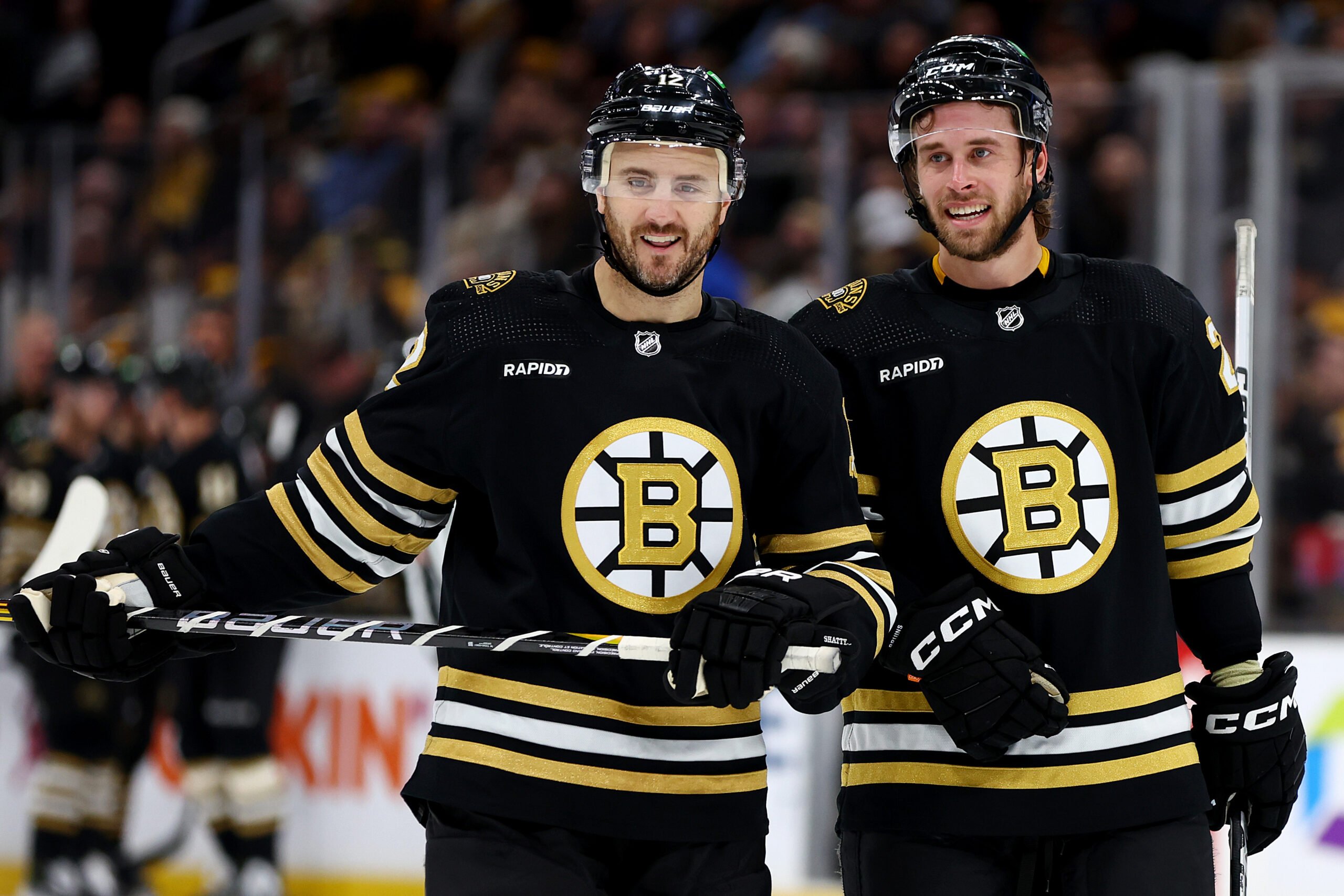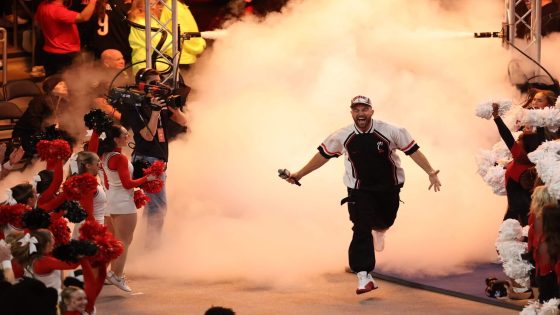BRIGHTON, Mass. — Chances are high that Kevin Shattenkirk will be on the No. 3 pairing and first power-play unit in Game 1 for the Boston Bruins on Saturday. Earlier this month, neither of those things looked likely.
For three straight games against the Carolina Hurricanes (twice) and Florida Panthers, Shattenkirk was a healthy scratch. Parker Wotherspoon was on the third pair. Charlie McAvoy was at his usual spot on PP1’s point.
But the power play was hurting the Bruins for too long.
As of Game 81, the Bruins had scored just 14 times on 91 opportunities since the All-Star break. Only the New York Islanders (15.1 percent), Montreal Canadiens (13.6) and Philadelphia Flyers (10.5) had done worse in this segment than the Bruins (15.4).
During this stretch, Brad Marchand had zero power-play goals. David Pastrnak had one.
“I always think you leave your top unit together,” coach Jim Montgomery said. “But it was too much of a prolonged time where I think they were stale mentally. It didn’t matter who had the puck. There was no movement. There was no purpose to what we were doing. We were fading away from the net instead of going and converging toward the net.”
So Montgomery turned to Shattenkirk to revive PP1. Whether the veteran can continue to do so will be one of the biggest factors in determining the Bruins’ first-round fate against the Toronto Maple Leafs.

Parker Wotherspoon (right) came out of the lineup to make room for Kevin Shattenkirk and his power-play skills. (Maddie Meyer / Getty Images)
‘A true pro’
Shattenkirk played in 61 regular-season games. His play away from the puck cost him ice time.
Opponents averaged 2.65 five-on-five goals against the Bruins per 60 minutes of play while Shattenkirk was on the ice, per Natural Stat Trick. It was the second-highest GA per 60 among team defensemen. Only rookie Mason Lohrei’s (2.76) was higher.
When Shattenkirk didn’t play, he understood why. Montgomery made it clear.
“Not easy to sit veteran players who have had tremendous careers,” Montgomery said. “His communication and our communication to him, we’ve never left him in the dark. He’s always been a true pro. He’s been great at not only keeping himself ready, but getting other players ready that are maybe sitting up there with him. He’s been tremendous that way.”
Shattenkirk has logged 952 career games because of his offensive touch. He has 210 power-play points, 11th-most among active defensemen.
“Everyone knows my game,” said Shattenkirk. “I’m more comfortable on the offensive side of things. But the work they’ve done with me this year defensively and the small details they preach around here, they’re always great reminders. It keeps me sharp and allows me to stay aggressive on pucks and puck battles. That’s what they want to see out of me. They want to see me winning puck battles. They kind of allow me to do the other things that I do well and take it from there.”
On the man advantage, the 35-year-old is icy at the offensive blue line. He is quick to move pucks, thread accurate shots through traffic and attack a penalty kill’s soft spots. McAvoy, who is nine years younger, is still incorporating these skills into his game.
On April 13 against the Pittsburgh Penguins, McAvoy flubbed a power-play touch at the point. Moments later, Drew O’Connor slipped behind McAvoy and Marchand to score a short-handed goal. Montgomery screamed at McAvoy on the bench after the goal.
One game later, Montgomery made his most radical PP adjustments of the year. Shattenkirk was critical to his decision.

Kevin Shattenkirk played only 61 games this season. (Maddie Meyer / Getty Images)
Even split
On April 15, prior to the second-to-last regular-season game, Shattenkirk took command of PP1 during the Bruins’ morning skate. He was joined by Pastrnak, Danton Heinen, Pavel Zacha and Pat Maroon.
McAvoy and Marchand went to the second unit to play with Morgan Geekie, Charlie Coyle and Jake DeBrusk. The message was clear: The power play had to improve in time for the playoffs.
That night, the Bruins played one of their worst games of the season in a 2-0 loss to the Washington Capitals. They were so bad that they failed to draw a power play. Montgomery said they probably didn’t deserve one.
The next night, Coyle drew a third-period hooking call on the Ottawa Senators’ Shane Pinto. On the power play, Shattenkirk rifled a wrister from the point on goal. Anton Forsberg stopped Shattenkirk’s shot. But after settling the rebound, Zacha went upstairs on Forsberg for the Bruins’ only goal. Shattenkirk’s decisiveness and accuracy produced the goal.
Come Game 1, Shattenkirk’s job will be to steer the power play with pace. Instead of stacking the reps toward one unit, both will share time. Tanks will be emptied.
“You have your stars who get their minute and a half, if need be,” said Shattenkirk. “But you should be able to go out there in a minute and create something. And if you don’t, a lot of teams have some guys who can come in on the second unit and create some momentum and chances as well. We spread it out. We’re confident in both units.”
During five-on-five play, Shattenkirk will have to work his left side next to Andrew Peeke. It is not ideal for any right-shot defenseman to switch sides.
But it is a compromise Montgomery is willing to make. The power play needs Shattenkirk at the point.
(Photo: Fred Kfoury III / Icon Sportswire via Getty Images)



